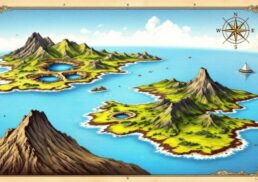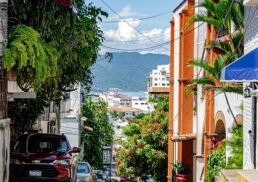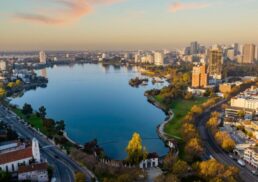Wondering how to travel in Croatia? This guide offers practical tips on using buses, ferries, car rentals, and more. Discover cost-effective ways to navigate Croatia’s cities, islands, and scenic landscapes.
Table of Contents
Key Takeaways
Buses are the most economical and reliable way to travel in Croatia, connecting major cities and offering scenic routes along the coast.
Ferries are essential for island hopping, with Jadrolinija providing frequent connections to popular destinations; booking in advance is recommended during peak season.
Renting a car offers flexibility to explore at your own pace, but public transportation in larger cities is also efficient and affordable for local travel.
Exploring Croatia by Bus
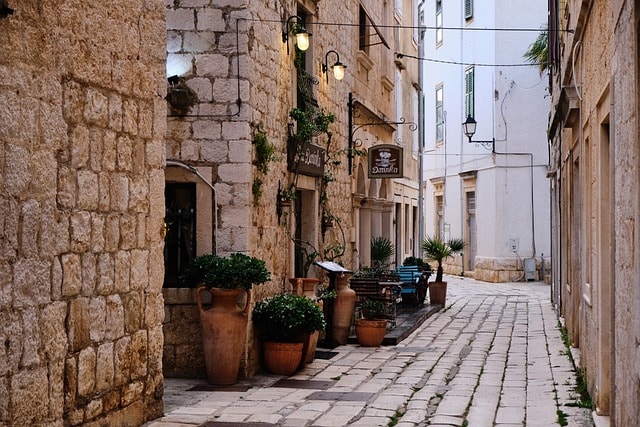
Buses are the backbone of public transportation in Croatia, offering an extensive bus network that connects major cities, coastal towns, and even the most remote inland areas. Intercity buses are not only reliable but also budget-friendly, making them an ideal choice for travelers looking to explore the country without breaking the bank.
Major operators include:
Arriva
Flixbus
Croatia Bus
Cazmatrans
These operators ensure a comfortable journey with amenities such as air conditioning and electrical sockets.
Purchasing bus tickets is straightforward and can be done online through platforms like Getbybus or at bus stations. Remember to carry cash, as it’s often required onboard. Round-trip tickets offer discounts but must be purchased from the same bus company. During peak summer months, be prepared for potential delays due to heavy traffic.
One of the highlights of bus travel in Croatia is the scenic routes, especially along the Dalmatian coast. Whether you’re heading to the stunning Plitvice Lakes National Park or exploring inland Croatia, the bus ride itself can be a memorable part of your Croatian trip. So, pack some snacks, sit back, and enjoy the journey.
Island Hopping with Ferries
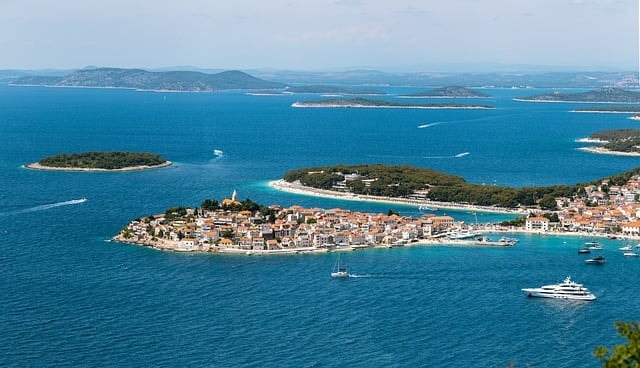
Island hopping is a quintessential part of any Croatian trip, and ferries are the best way to navigate the archipelago. Jadrolinija, the largest ferry company, connects major destinations like Brac, Hvar, Vis, and Korcula from Split. Ferries operate regularly, making it easy to plan your itinerary and explore the surrounding islands.
Booking a ferry ticket online is recommended, especially during peak seasons, to secure your spot and avoid long queues. While passenger tickets are affordable, transporting a car on ferries can significantly increase costs. If you’re not planning to travel by car, ferries are an economical option to experience the beauty of Croatia’s islands.
For those looking to customize their island-hopping adventure, private boat rentals are available, offering a more flexible and personalized experience. Whether you choose to stick to scheduled ferries or hire a private boat, the Croatian islands promise an unforgettable journey through crystal-clear waters and picturesque landscapes.
Renting a Car for Flexibility
Renting a car offers unparalleled flexibility, allowing you to explore Croatia at your own pace. With well-maintained roads and a modern motorway system, getting around by car is both convenient and enjoyable. The A1 motorway, for instance, connects major cities like Zagreb and Split, making long-distance travel efficient.
Car rental costs vary, with daily rates starting at €25 for a standard vehicle and increasing during peak travel times. It’s advisable to inspect the rental car for any damage and ensure it is documented before departure. Also, keep in mind that rental cars can be taken on local car ferries but not on international routes.
Driving in Croatia is straightforward, with clear speed limits: 50 km/h in urban areas and 130 km/h on motorways. Always carry vehicle registration and insurance documents while driving. Whether you’re planning a coastal road trip or exploring the countryside, a rental car enhances your travel experience with the freedom to stop and explore off-the-beaten-path destinations.
Train Travel in Croatia

While train travel in Croatia is limited compared to other modes of transportation, it still offers a comfortable and scenic way to explore certain routes. The railway system primarily connects Zagreb with Split and Rijeka, with travel times ranging from 6 to 8 hours. One-way fares are economical, costing around €15.
The train journey from Zagreb to Split, for instance, provides a relaxing experience with various passenger amenities. Although slower than buses or cars, train travel can be a delightful part of your Croatia trip, offering picturesque views of the countryside.
Flying Across Croatia
For those short on time, flying is the fastest way to travel across Croatia. The major airports in Zagreb, Split, and Dubrovnik serve international flights year-round, while other airports offer seasonal services. Croatia Airlines, the national carrier, operates domestic flights, making it easy to hop between cities.
Flights between Zagreb and Dubrovnik, for example, average around €100, but you can find lower fares for early morning or late-night flights.
Flying is particularly convenient for covering long distances quickly, allowing you to maximize your time exploring the beautiful coastal cities and the Dalmatian coast and other regions.
Cycling Adventures
Cycling offers a unique and immersive way to explore Croatia’s breathtaking landscapes. Popular routes pass through charming small towns and picturesque countryside, providing a different perspective on the country’s beauty. Tour operators offer rental bikes designed for the Mediterranean terrain, ensuring a comfortable ride.
Whether you’re pedaling through national parks or along the coast, cycling is a rewarding experience that’s totally worth the effort. It’s a fantastic way to connect with nature and discover hidden gems off the typical tourist paths.
Public Transportation in Large Cities
In larger Croatian cities like Zagreb and Dubrovnik, public transportation is both efficient and affordable. Local bus tickets typically cost between €1 and €2, and in Zagreb, the tram system connects key locations like the train and bus stations. Tickets must be validated on board, and discounts are available when purchased at newsstands.
In Dubrovnik, local buses connect popular areas such as Lapad Bay with the city center, making it easy to navigate without a rental car. Although public transport is available, many cities are small enough to explore on foot, adding to the charm of your Croatian trip.
For a week-long stay, budgeting around €200 per person for public transport ensures you can move around comfortably while keeping costs in check. Public transportation in Croatia’s larger cities is a popular form of travel, offering a hassle-free way to explore major destinations.
Private Transfers and Taxis
Private transfers and taxis provide a convenient and flexible option for getting around Croatia. Uber is available in many areas, offering an additional choice for private transfers. Taxi fares are fixed and heavily regulated, ensuring consistent pricing for travelers.
When using taxis, make sure the driver turns on the meter to avoid overcharging. A private transfer is also a great option for those traveling with extra luggage or looking for a more personalized experience. Drivers often provide tailored stops and insights, enhancing your journey through Croatia.
Seasonal Travel Tips
Traveling in Croatia requires some seasonal considerations to make the most of your trip. During the peak tourist season, it’s best to book accommodation and transportation in advance, arrive early, and prepare for potential traffic jams. In contrast, ferry and bus schedules are less frequent during the winter months.
Traveling in the shoulder season offers mild weather and fewer crowds, making for a more pleasant experience. However, keep in mind that weather conditions like the Bora winds can cause abrupt changes and potential delays in maritime transport.
Day Trips and Excursions

Day trips and excursions are a fantastic way to explore more of Croatia’s stunning landscapes and cultural heritage. Plitvice Lakes National Park is a must-visit for its breathtaking waterfalls and hiking trails. Joining a tour guide from Split can make the visit even more memorable.
Another popular day trip from Split is to Mostar in Bosnia and Herzegovina, offering a glimpse into the region’s rich history and culture. Travelers also love exploring the coastal route to Dubrovnik, with scenic stops along the way.
Whether you’re visiting national parks or historic towns, day trips add depth to your Croatian adventure.
Budgeting for Transportation
Budgeting for transportation is crucial for a smooth and enjoyable trip in Croatia. Buses are the most economical way to travel, with ticket prices varying based on the route and time of booking. In Split, there is even a free bus system available to certain areas.
Traveling during the off-peak season can significantly reduce transportation costs, making it a more budget-friendly option. Whether you’re using public transport, renting a car, or taking private transfers, planning your budget helps ensure a stress-free travel experience.
Safety Considerations
Croatia is generally a safe travel destination, but it’s always wise to stay vigilant. Avoid carrying large amounts of cash and use hotel safes for valuables to ensure the safety of your belongings. Be cautious in previously war-affected areas due to the potential presence of unexploded mines.
While violent crime is rare, tourists should be aware of scams and pickpockets, especially in crowded places. Using common sense and taking basic precautions will help you enjoy a safe and memorable trip through Croatia.
Learn more, How to get around Croatia, from boats and buses to bicycles.
Summary
In summary, traveling in Croatia offers a variety of methods to suit every traveler’s needs. From the affordability and reliability of buses to the flexibility of car rentals, the scenic ferry rides, and the adventurous cycling routes, each mode of transportation has its unique benefits. By planning ahead and considering seasonal tips, you can make the most of your Croatian trip.
So pack your bags, choose your preferred travel methods, and get ready to explore the stunning landscapes, historic cities, and charming islands of Croatia. Whether you’re a first-time visitor or a returning traveler, Croatia promises an unforgettable journey.
Frequently Asked Questions
What is the most affordable way to travel around Croatia?
Buses are definitely the most affordable way to get around Croatia due to their extensive routes and budget-friendly prices. So, hop on a bus and enjoy your travels!
Can I take a rental car on a ferry to the islands?
Absolutely, you can take a rental car on local ferries to the islands, but just keep in mind that it’s not allowed on international routes.
Are there any seasonal considerations for traveling in Croatia?
Absolutely, traveling in Croatia during peak season means you should book in advance and expect traffic. If you prefer fewer crowds and lower prices, consider visiting during the off-peak months.
Is public transportation available in large cities like Zagreb and Dubrovnik?
Absolutely, you’ll find that both Zagreb and Dubrovnik offer efficient bus and tram systems, making it easy to get around without breaking the bank. Enjoy exploring these cities!
What safety precautions should I take while traveling in Croatia?
To stay safe while traveling in Croatia, keep your cash minimal, utilize hotel safes, and stay vigilant against scams and pickpockets in busy areas. It’s all about being mindful and protecting your belongings!
